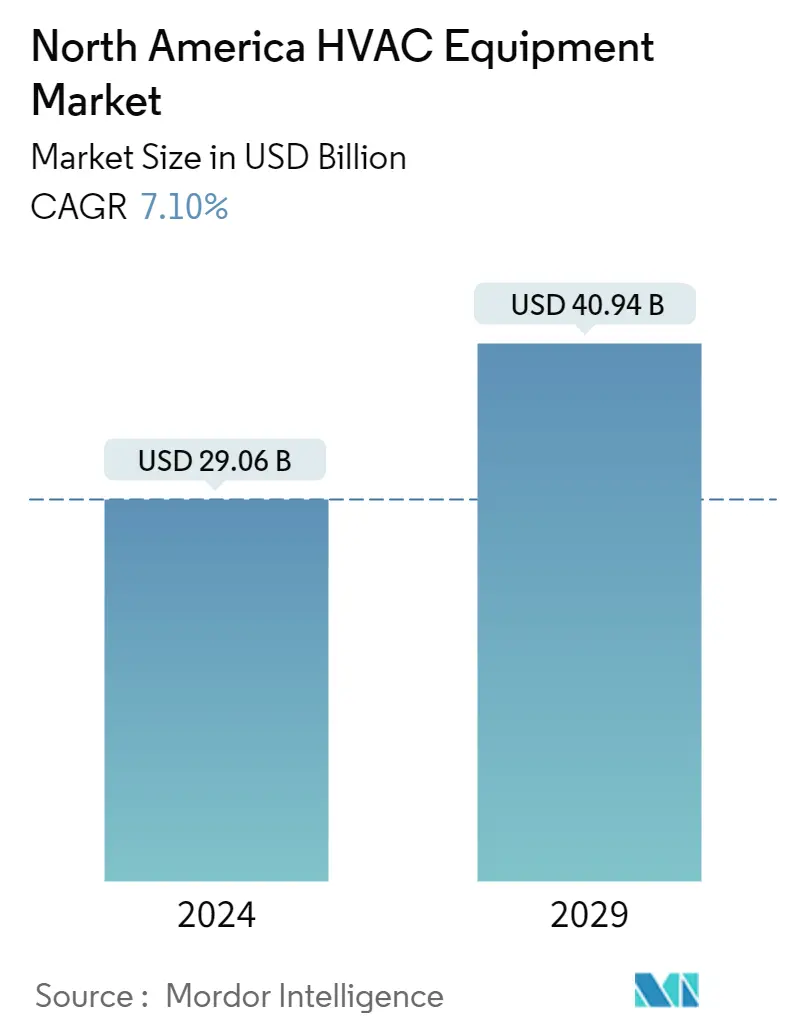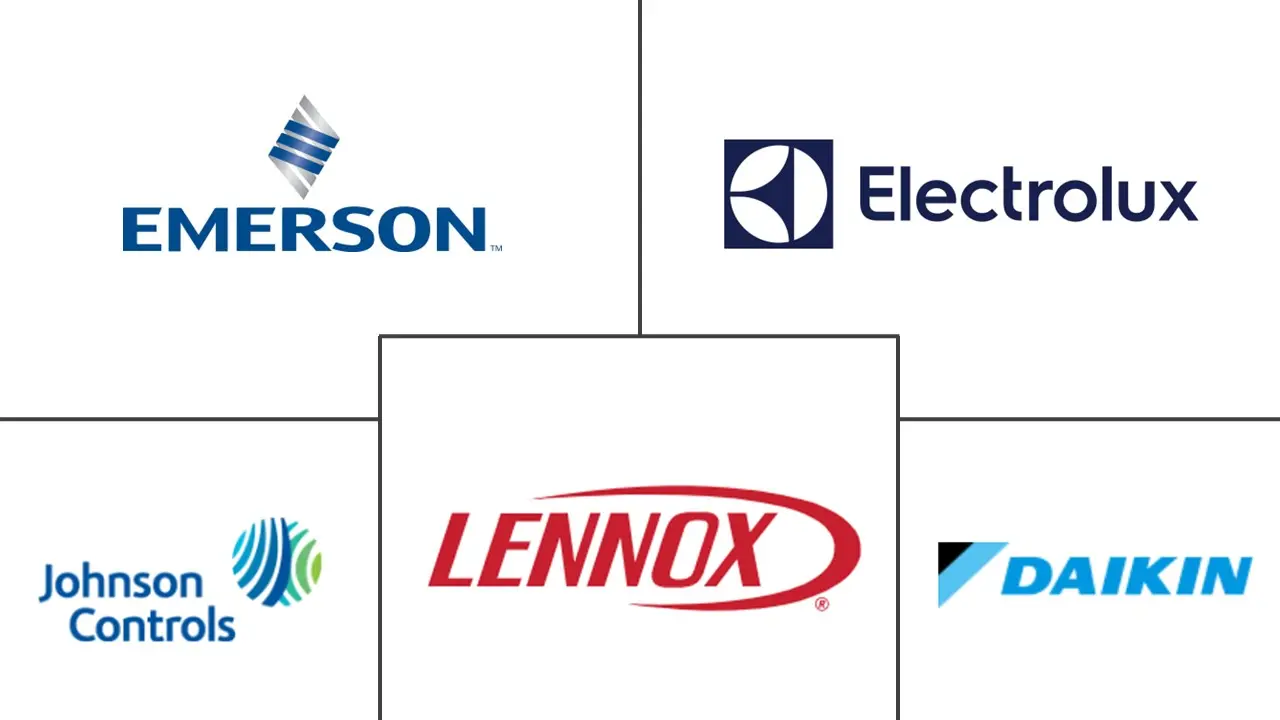Market Size of North America HVAC Equipment Industry

| Study Period | 2019 - 2029 |
| Base Year For Estimation | 2023 |
| Market Size (2024) | USD 29.06 Billion |
| Market Size (2029) | USD 40.94 Billion |
| CAGR (2024 - 2029) | 7.10 % |
| Market Concentration | Low |
Major Players
*Disclaimer: Major Players sorted in no particular order |
Need a report that reflects how COVID-19 has impacted this market and its growth?
North America HVAC Equipment Market Analysis
The North America HVAC Equipment Market size is estimated at USD 29.06 billion in 2024, and is expected to reach USD 40.94 billion by 2029, growing at a CAGR of 7.10% during the forecast period (2024-2029).
Increasing disposable income, rapidly expanding construction activity, and changing weather patterns are driving the growth of the market studied. North America is witnessing a significant increase in the implementation of smart home and smart city programs, driving the market's growth.
- Growing government support, in the form of higher budget allocations designed to increase sustainable community development, may contribute to the continually growing commercial and industrial construction sectors. Besides, increased construction activities, rapid urbanization, and infrastructural reforms result in an upsurge in HVAC unit replacements, thus driving the HVAC equipment market.
- The growth of the North American HVAC equipment market is driven by an increase in demand for smart systems and the integration of the Internet of Things (IoT), industrial automation systems, smart manufacturing, and industry 4.0. A significant portion of the market's above-average growth is anticipated from the uptick in green building construction activities. The smart home market, which is expanding rapidly, is projected to boost the HVAC system market's growth.
- Green building construction projects further support the empowerment of the HVAC equipment market in the region. For instance, in February 2022, Canada Green Building Council (CAGBC) announced that the country ranked second globally on the annual list of Top 10 Countries and Regions for LEED (Leadership in Energy and Environmental Design), a green building certification program used worldwide, in 2021. Installation of HVAC equipment with standards imposed by the governmental bodies for the rising awareness of occupants' health and energy consumption is becoming a vital criteria in green building designs.
- However, as per IEA and the U.S. Department of Energy, around 25-35% of electricity consumption is due to HVAC systems. According to the same source, a large part (20% - 60%) of this energy consumption is contributed by parasitic energy use (energy used to power fans and pumps used for the transfer of heating and cooling). Thus, centralized HVAC systems have burdened energy bills despite being more efficient (in terms of energy units' consumption per unit area of space conditioned) than unitary systems.
- There is a lack of employment in the whole manufacturing sector. Sadly, there is no exception in the heating and air conditioning industry Whether or not current workforce shortages are caused by these, they will likely be exacerbated might hamper the market gorwth
- The pandemic highlighted the importance of ventilation, which was a significant factor driving the demand for many HVAC systems in the region. Several studies suggested that COVID-19 transmission was particularly effective in crowded, confined indoor spaces such as workplaces (offices, factories) and other indoor settings, such as churches, restaurants, shopping centers, and vehicles.
